Sofema Aviation Services (SAS) considers key elements of the EASA Part 21 EWIS design and best practice implementation.
Introduction
EASA Part 21 Design Organisations Subpart J face significant challenges in managing and maintaining Electrical Wiring Interconnect Systems (EWIS). Historical evidence, including major accidents has shown that improper EWIS design, maintenance, and oversight can lead to catastrophic failures.
The key challenges and their corresponding best practice mitigations are outlined below:
Aging of Wiring and Degradation
Challenge:
- Over time, insulation can crack or breach, exposing conductors and increasing the risk of electrical arcing and fire.
- Aging wiring increases the likelihood of latent failures and system degradation.
- Maintenance-induced damage (e.g., needling, wire chafing) further accelerates degradation.
Best Practice Mitigations (Aging of Wiring and Degradation)
Enhanced Zonal Analysis Procedures (EZAP):
- Ensure the Implementation of EZAP inspections under AMC 20-21 to proactively identify aging and degradation issues.
- Develop structured maintenance programs that include regular and targeted inspections of wire insulation and conductors.
Use of Updated Materials and Technology:
- Ensure the use of materials that have better resistance to heat, moisture, and mechanical damage.
- Encourage the use of high-performance insulation materials compliant with CS 25.1707.
Training and Competence Development:
- Develop targeted training for design engineers under AMC 20-22 to improve competence in identifying and mitigating wiring degradation risks during the design phase.
- Ensure that design personnel understand how aging and environmental factors (e.g., vibration, moisture, thermal cycling) affect wire insulation and connectors, and incorporate these considerations into the initial design.
- Integrate EWIS-specific training into the design process to ensure that design engineers are aware of best practices in wire routing, separation, and protection against contamination and mechanical damage.
- Encourage cross-functional training between design and maintenance teams to improve the feedback loop and ensure that in-service issues related to wiring degradation are considered in future designs.
Contamination and Foreign Object Damage (FOD)
Challenge:
- Contamination by fluids (e.g., hydraulic oil, fuel, water, and lavatory fluids) can lead to insulation breakdown and electrical shorts.
- Foreign objects (e.g., metal shavings) left after maintenance or repair work can cause arcing and damage.
- Combustible debris (e.g., lint, dust) can serve as a fire accelerant.
Best Practice Mitigations (Contamination and Foreign Object Damage (FOD))
- Ensure that design engineers understand the impact of aging, environmental exposure (e.g., vibration, moisture, temperature cycling), and mechanical damage on EWIS, and reflect these considerations in the accomplishment instructions (e.g., Instructions for Continued Airworthiness (ICA)).
Use of Protective Barriers:
- Ensure the use protective sleeves and conduits to shield wiring from fluid and debris exposure wherever possible & appropriate.
- Ensure that maintenance tasks are created for drainage paths in cargo bays and underfloor areas are clear to prevent fluid pooling.
Design Considerations:
- Design wiring routes away from high-risk areas (e.g., under galleys and lavatories).
- Ensure proper separation from hydraulic, fuel, and waste systems as per CS 25 Subpart H.
Poor Installation and Routing
Challenge:
- Improper routing or clamping of wires increases the risk of chafing and short circuits.
- Incorrect installation practices (e.g., using incorrect clamps or tie wraps) can lead to vibration damage and wire breakage.
- Lack of adequate separation between electrical wiring and other aircraft systems (hydraulic, fuel, oxygen) increases the risk of system failures.
Enhanced Routing Standards (Best Practice Mitigations)
- Follow EWIS routing guidelines under CS 25.1707 to ensure physical separation and protection from chafing.
- Require adherence to manufacturer’s wiring diagrams and routing instructions.
Inspection and Verification:
- Introduce mandatory post-installation inspections to confirm compliance with routing standards.
- Ensure wire bundles are properly secured using approved clamps and tie wraps.
Material Specification:
- Specify approved materials for clamps and insulation.
- Ensure materials meet the flammability requirements defined under CS 25.1707.
Inadequate Maintenance and Repair Practices
Challenge:
- Poor workmanship during maintenance can lead to damaged wires or improper connections.
- Incorrect splicing or improper torquing of terminal lugs can cause overheating and circuit failure.
- Inadequate training results in poor fault diagnosis and corrective action.
Enhanced Training under AMC 20-22 (Best Practice Mitigations)
- Provide specialized training on EWIS maintenance, repair, and fault diagnosis.
- Ensure personnel understand proper splicing techniques, insulation repair, and terminal torqueing.
Use of Approved Procedures and Tools:
- Ensure all repair work is conducted using approved maintenance manuals (AMM) and wiring practices manuals (WPM).
- Prohibit “quick fixes” or unapproved splicing methods.
Introduction of Error Prevention Tools:
- Introduce torque-checking tools and color-coded markers for verifying proper assembly.
- Use automated inspection tools for high-risk areas (e.g., power feeders).
Electrical Arcing and Fire Risk
Challenge:
- Electrical faults due to arcing are a major cause of onboard fires.
- Circuit breakers may fail to trip under specific arcing conditions (e.g., low current).
- Wiring insulation can ignite and propagate fire if flammable contaminants are present.
Best Practice Mitigations:
Use of Arc-Fault Circuit Interrupters (AFCI):
- Install AFCI devices to automatically detect and shut down arcing faults.
- Ensure circuit breaker calibration includes sensitivity to arcing events.
Enhanced Flammability Standards:
- Use flame-retardant materials for insulation and wire sheathing.
- Ensure compliance with FAA and EASA flammability requirements.
Containment and Isolation:
- Ensure adequate physical separation of wiring from fuel, hydraulic, and oxygen systems (CS 25.1707).
- Introduce fire-retardant barriers around high-risk electrical zones.
Human Factors Challenges:
- Human error remains a leading cause of EWIS-related failures.
- Lack of proper communication, fatigue, and stress contribute to poor decision-making and mistakes.
- Non-compliance with procedures due to time pressure or lack of resources.
Best Practice Mitigations:
Human Factors in Design:
- Incorporate human factors principles into the EWIS design process to minimize the potential for human error during installation, maintenance, and operation.
- Ensure accomplishment instructions (ICA) are clear, well-structured, and free from ambiguity to reduce the risk of misinterpretation by maintenance personnel.
- Consider accessibility and ergonomics when designing EWIS installations to minimize the likelihood of human error during maintenance or inspection activities.
Design-Induced Fatigue Mitigation:
- Design EWIS systems to facilitate ease of access and replacement to reduce the time and complexity of maintenance tasks, thereby mitigating fatigue-related errors.
- Minimize workload intensity by designing EWIS with simplified routing and modular installation, allowing quicker fault diagnosis and repair.
Next Steps
Follow this link to our Library to find & download related documents for Free.
Sofema Aviation Services (SAS) and Sofema Online (SOL) provide classroom, webinar and online training covering all aspects of EWIS. Please see the websites or email team@sassofia.com
Tags:
EWIS, Human Factors, AMC 20-22, Subpart J, Part 21, SAS blogs, Instructions for Continued Airworthiness (ICA), Foreign Object Damage (FOD), CS 25 Subpart H, Best Practice Mitigations, Arc-Fault Circuit Interrupters (AFCI)




